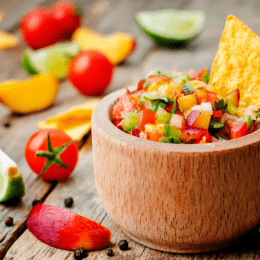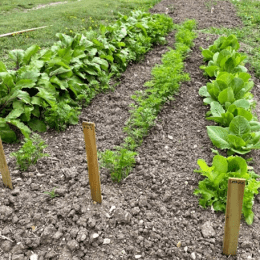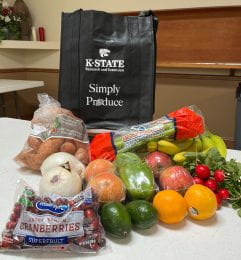
Add taste without adding a lot of calories. A combination of tomatoes, onions, and peppers can add zest to chips. A mixture of fruit, herbs, onions and pepper added to meat or fish can add unique flavors to dishes. There are a variety of salsa options for different preferences and dishes such as spicy, hot, sweet, herbal, and aromatic.
Salsa ingredients and preparation tips:
- Keep cut fruits, such as apples, pears, bananas, and peaches from turning brown by coating them with an acidic juice such as lemon, orange, or pineapple juice. Or use a commercial produce protector and follow the manufacturer’s directions.
- Cover and refrigerate cut fruit and veggies until ready to serve.
- Most salsas taste best if refrigerated for about an hour before serving to let the flavors blend.
Serve salsa safely.
- Perishable foods like dips, salsas, and cut fruit and vegetables should not sit at room temperature for more than two hours.
- If you will be serving items such as these for a longer period than this, set out a smaller bowl and then replace it with another one when it is empty.
- Do not add fresh dip or salsa to dip or salsa that has been sitting out.
- Refrigerate and use up any dip or salsa that has not been served within three to four days of preparation.
Source: University of Nebraska Lincoln Extension
By: Jamie Rathbun

 temperatures average 45F. These include:
temperatures average 45F. These include:

